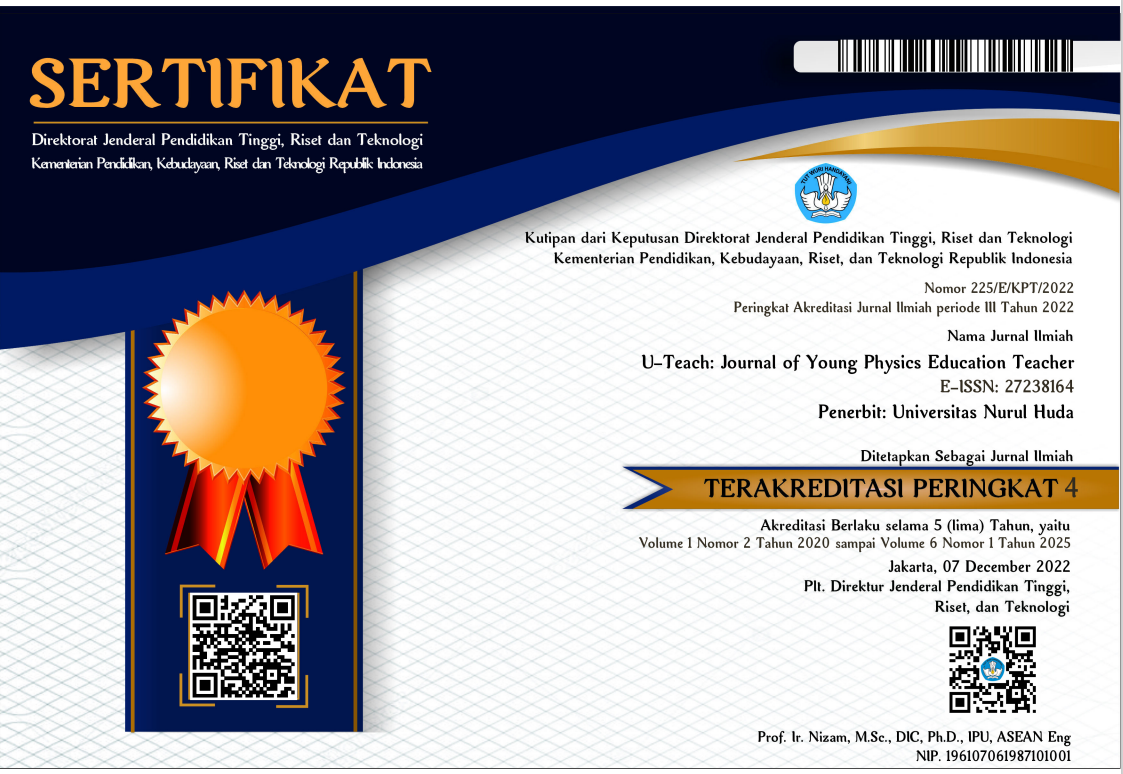Kajian Etnosains Arsitektur Rumah Panggung “Dalam Loka” Sumbawa sebagai Sumber Pembelajaran Fisika
DOI:
https://doi.org/10.30599/uteach.v5i1.842Keywords:
Dalam loka sumbawa, ethnoscience, physics learning resources, the architecture of the house on stiltsAbstract
Indonesia is very rich in cultural diversity which is reflected in various aspects including the "Dalam Loka" stilt house as a form of local wisdom from the Samawa, Sumbawa, and NTB tribes. Dalam Loka, it can be used as a learning medium or resource by studying the architecture of the building based on physics concepts. This research aims to identify the physics concepts contained in the architecture of Dalam Loka stilt houses by reconstructing the community's original knowledge into scientific knowledge which can be used as a source of physics learning. The research method used is ethnoscience-based descriptive qualitative. Data collection was carried out in Sumbawa Regency, NTB using observation, interviews, and literature review techniques. The data obtained is then analyzed, verified and reduced, then constructed, and interpreted into scientific knowledge. Physics concepts that can be explored from stilt houses in the workshop are damped forces, properties and types of insulating materials, temperature, heat, earth rotation, balance, gravity, pressure, lateral forces, Bernoulli's principle, simple planes, density, elasticity, water absorption, and rigid objects. The results of the research show that the architecture of stilt houses in the location can be interpreted into scientific knowledge and implemented in physics learning
Downloads
Downloads
Published
How to Cite
Issue
Section
License
Copyright (c) 2024 Hermansyah Hermansyah, Siti Sriyati

This work is licensed under a Creative Commons Attribution-ShareAlike 4.0 International License.






